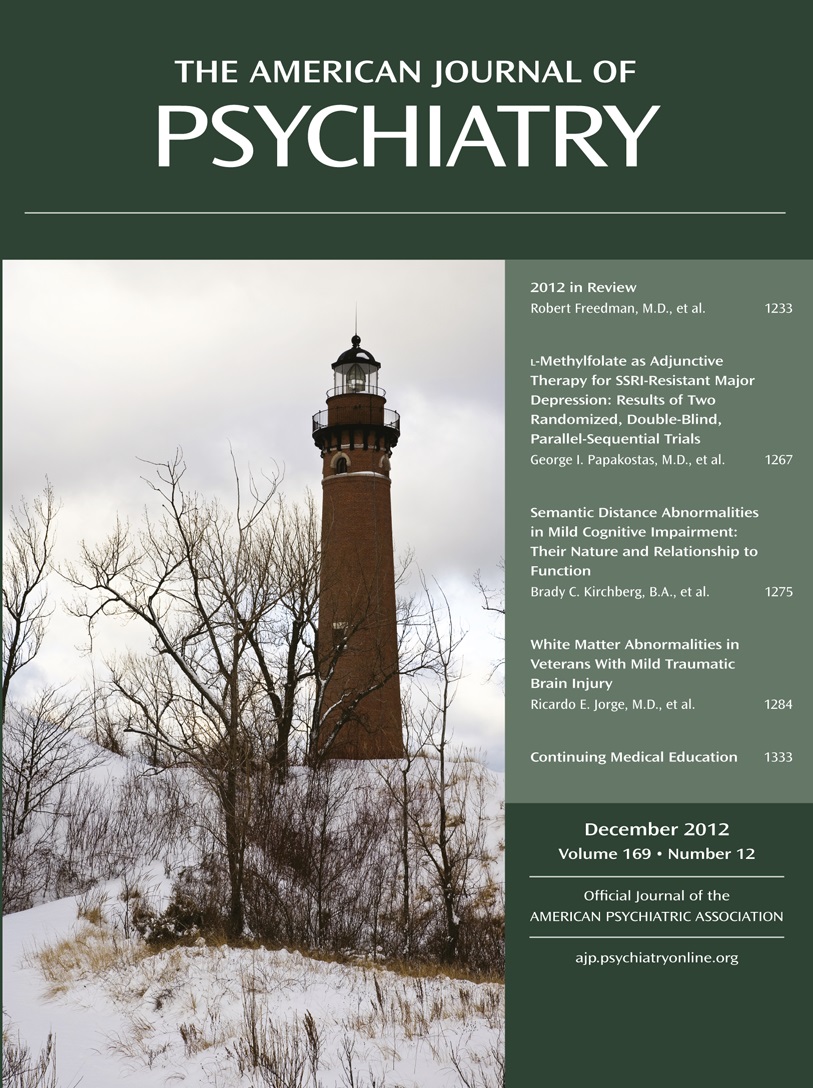Monoamine Oxidase Inhibitors Potentiate the Effects of Deep Brain Stimulation
To the Editor: Approximately 50%–60% of patients with treatment-resistant depression respond to deep brain stimulation (DBS) to the subcallosal cingulate gyrus (1). The therapeutic strategies for patients who are considered nonresponders are still unclear. We provide clinical and preclinical evidence suggesting that the effects of DBS may be potentiated by the co-administration of monoamine oxidase inhibitors (MAOIs).
Preclinical Studies
The first step in our study was to conduct dose curve response experiments to select doses of antidepressant medications associated with a fixed range of an antidepressant-like response in the forced swim test, i.e., a 30%–40% reduction in immobility scores (see the data supplement that accompanies the online edition of this letter). Once these were established, fluoxetine, imipramine, tranylcypromine, or reboxetine were co-administered along with a subthreshold dose of DBS (50 μA, 90 μsec, 130 Hz) (2). Overall, we found that animals receiving the MAOI tranylcypromine and ventromedial prefrontal cortex stimulation had a 75% reduction in immobility scores compared with nonstimulated saline-treated control subjects (Figure 1). This effect was more pronounced than the 20%–30% antidepressant-like response observed with either tranylcypromine or DBS alone. These findings influenced the clinical management of one of our DBS patients.

a A significant enhancement of the antidepressant-like effects of stimulation was observed in animals receiving tranylcypromine but not other classes of drugs. Error bars indicate standard error. Numbers in parentheses represent animals per group.
* p≤0.05 when DBS groups were compared with their respective drug-treated control subjects (ANOVA Bonferroni-Dunn post hoc).
Case Report
“Mr. D” is a 35-year-old man with an 11-year history of treatment-resistant depression. From the onset of his disorder, he was unable to achieve a sustained euthymic mood despite multiple adequate trials of medications (including MAOIs), psychotherapy, transcranial magnetic stimulation, ECT, and vagus nerve stimulation. In 2005, he underwent subcallosal cingulate gyrus DBS under a study protocol (3). Within 6 months, his score on the 17-item Hamilton Depression Rating Scale (HAM-D) fell from a baseline of 22 to 7. Despite this initial response, Mr. D relapsed 4 years later, and DBS parameters were adjusted without benefit. In 2010, his pulse generator was replaced, also without a noticeable improvement in mood. Adjunctive medication trials and augmentation regimens were all unsuccessful. Based on our preclinical findings, we decided to add tranylcypromine, 40 mg p.o., b.i.d. (as taken in the preoperative period), alongside DBS (2.5 V, 90 µsec, 130 Hz, contacts 1 and 5 used as cathodes/case as the anode). After this medication change, Mr. D’s depression severity score declined markedly from a pretreatment HAM-D-17 score of 22 to 16 after 2 weeks, to 8 after 2 months, and to 9 after 4 months.
Discussion
Recent studies suggest that animal models of depressive-like behavior may have predictive validity for studying the mechanisms of DBS (4). Our results corroborate this assertion, as clinical findings were in line with preclinical data. In our DBS series, only a minority of patients were taking MAOIs postoperatively. This precluded any meaningful analysis to assess whether such patients had a better response to stimulation. With the caveat that the clinical analysis was limited to a single patient, our results suggest that the use of an MAOI alongside DBS may be a strategy to treat depressive patients who are unresponsive to or who lost the initial benefits obtained with DBS. Future research is necessary to corroborate these results and to investigate the mechanisms involved in the interaction between DBS and MAOIs.
1 : Deep brain stimulation for treatment-resistant depression: follow-up after 3 to 6 years. Am J Psychiatry 2011; 168:502–510Link, Google Scholar
2 : Antidepressant-like effects of medial prefrontal cortex deep brain stimulation in rats. Biol Psychiatry 2010; 67:117–124Crossref, Medline, Google Scholar
3 : Subcallosal cingulate gyrus deep brain stimulation for treatment-resistant depression. Biol Psychiatry 2008; 64:461–467Crossref, Medline, Google Scholar
4 Deep brain stimulation for psychiatric disease: contributions and validity of animal models. Sci Transl Med 2012; 4:142rv8Crossref, Medline, Google Scholar



